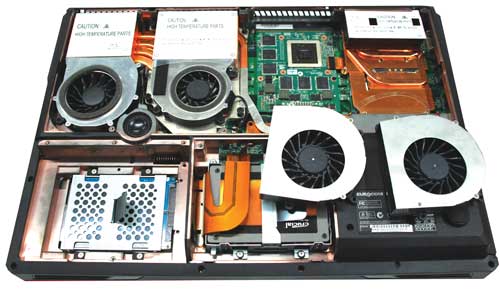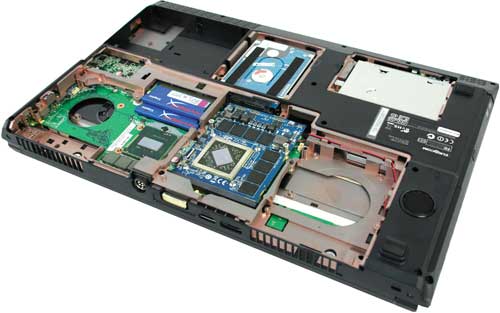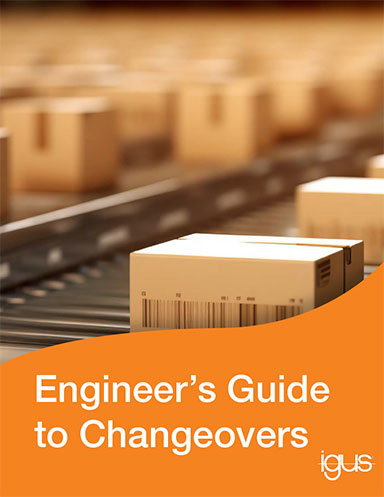Computing for the Mobile Engineer
Engineers on the move need more than just a single laptop.
September 1, 2011
By Peter Varhol
Engineers have always had to travel to where their projects are located. Whether the project is a major construction effort, or a collaboration on an automotive or aerospace system, design engineers may spend anywhere from a few days to months at a time away from their normal business offices. There are also consulting engineers who spend virtually all of their time traveling from one project to the next.
But the computing power a mobile engineer needs has been difficult to come by. Today, some high-end laptops can make acceptable engineering workstations.
The Intel Core i7 quad-core processor includes an eight-way multi-tasking capability and additional L3 cache for speeding up data and instruction transfers. These processors also use Turbo Boost Technology and Intel Hyper-Threading technology for added computation performance. Many of these systems also incorporate NVIDIA graphics processing units, which can also be used to execute applications designed to make use of fast GPUs. And while these systems often top out at only 8GB of memory, that’s enough for many types of designs.

Engineering on the go is dependent on a powerful server such as Eurocom’s
Panther 3, with a Xeon 5600 processor, up to 24GB of memory, a RAID
storage interface, and gigabit Ethernet.
But even a powerful laptop isn’t enough for many engineering projects. The lack of memory can limit processing performance and the size of data sets. Plus, while the quad-core processor helps when running applications with a high degree of parallelism, a second processor could come close to doubling performance under some conditions.
There are several ways of supplementing a laptop client for engineers who travel, but need more horsepower for their work. One is cloud computing, which enables the client to control processing that is done on a remote server or server cluster, accessible through Web protocols. A second option is to take advantage of local computing power, by joining the network at the current work location. It may even be possible to set up a virtual private network (VPN), so that the engineer can connect to the home office network via the Internet.
Both of these alternatives have questions and limitations. While engineers can tap virtually unlimited computing power in the cloud, or back at the home office, the Web interconnect is painfully slow for a lot of work “meaning that the client at best serves as the user interface, and does little or no processing by itself.
And connecting to the local network, if there is one available, opens the door to security issues on both sides of the connection. For the engineer, it may be necessary to protect the intellectual property being developed, and joining a new network provides an entry point into the system. For the local network, whether partner or customer, letting a system not under its direct control become part of the network may not pass muster with the organization’s security policies.
You Can Take It with You
A third option, however, is beginning to emerge. Call it “engineering on the go.” It involves not only engineering laptops as client workstations, but also a full-fledged computer network and one or more servers with enough capacity and performance to take on many different types of engineering design projects, including analysis and simulation. The idea is to take your entire computing environment with you, including servers, workstations, and network infrastructure.
It’s not as difficult as it may sound. Most professionals already carry a laptop with them that could serve as a low- to middle-end engineering workstation replacement. Routers need only be as large as the number of Ethernet ports they have, and cabling can be purchased inexpensively at the destination, or shipped separately.
The server might be a more challenging prospect. At the heart of the engineering-on-the-go concept is the server on the go “a capable engineering server that can provide the computational back end for design and low- to mid-range analysis and simulation tasks. While it might be odd to think of a laptop as a server, what really matters is the power of its components.

Workstations such as Eurocom’s Neptune provides a lot of memory for
design tasks, as well as an Intel Core i7 Extreme Edition processor.
Most laptop configurations can run Windows Server or a Linux server operating system, but don’t have the performance necessary to be used for engineering applications. To outfit such a system would require looking at processor options, memory and cache expansion capacities, and network bandwidth capabilities. You won’t get a configuration that replicates a high-end tower or rack-mounted server, but you may get close to comparable performance.
Together with engineering laptops using the quad-core Intel Core i7 processor, these servers can form the backbone of a network that can serve many design engineering and lower-end analysis functions. In addition to providing computational resources, it can provide centralized and protected access to other networks and the Internet, enforce security policies, provide access to storage, and offer a number of other functions.
Why would an engineering team go through the trouble of assembling a high-end computational network like this? In effect, engineers take their own full network with them on project deployments. An individual engineer can put a server and an engineering workstation laptop in a carry-on bag, and have the beginnings of a network set up within a few minutes on-site. It can provide many of the benefits of a network over an individual laptop.
A more full-featured network-computing environment can be shipped in the baggage compartment of a passenger aircraft. A properly padded steamer trunk can easily carry half a dozen laptop-sized systems, along with a router and enough cabling to get started.
Concept Buy-in
If engineering on the go fits your way of working, the first question you’re likely to have is where you can go to find systems to fit with mobile engineering. Most mainstream computer manufacturers offer high-performance laptops that can serve as desktop replacement systems for general use. However, in most cases, these systems max out at 8GB of memory, which simply isn’t sufficient for most engineering uses.
Instead, engineers need systems that can accommodate up to 16 or 24GB of memory, with at least four cores for design and rendering, and normal office work. Outfitted with high-end graphics cards, design and rendering still remain the best uses. However, it will also be possible to do some low-end analysis computations. At worst, engineering on-the-go systems can set up problems that can be sent off to the home office “or to the cloud “for analysis.
Most of the major systems vendors, such as Dell, Lenovo and HP, typically have a small number of such high-end offerings. Alternatively, specialty suppliers focused on engineering and other performance markets, such as ASUS, Eurocom and other small players, offer systems specifically geared toward the mobile engineer.
While high-performance systems using the Intel Xeon processors have been around for about three years, the engineering on-the-go concept was coined by Eurocom, a maker of laptop systems for a variety of uses. Eurocom’s Panther 3 highlights the server part of the solution, with a 6-core Xeon 5600 processor, up to 24GB of memory, and gigabit Ethernet, while the Neptune workstation includes up to 32GB of memory and an Intel Core i7 Extreme Edition processor.
“Engineering on the go represents the reality of many of today’s professionals,” says Mark Bialic, president of Eurocom. He notes that security was a primary justification for the concept. “Many of our customers on a distant project can’t trust that they’re protecting their intellectual property. They can’t have that confidence using a local system or network.”
Some engineers see it as a matter of convenience. Jim Turney, an independent engineering consultant, carries a Xeon laptop server from Dell on all of his assignments. “I have everything I need, from my design applications to a firewall,” he adds. “I even carry a small router so I can join a network at the company I’m working for.”
Not an Office Replacement
Clearly, engineering on the go isn’t a replacement for hardwired clusters and powerful servers and workstations in a traditional office environment. The systems supporting a fixed network often have multiple processors and more cores; in the case of clusters, they may be running dozens or even hundreds of cores.
But many engineers have to go to the project, rather than have the project come to them. The need for mobility places difficult constraints on both engineers and the hosting organization, and the options are limited. Engineering on the go provides one of the best alternatives for many circumstances. It reduces reliance on local network services and providers, while protecting engineering data that may be sensitive or confidential. It may also provide a level of computing reliability not available locally. And because of the size and relative power of the servers, it is readily transportable to just about anywhere.
For More Information:
Contributing Editor Peter Varhol covers the HPC and IT beat for DE. His expertise is software development, math systems, and systems management. You can reach him at [email protected].
Subscribe to our FREE magazine, FREE email newsletters or both!
About the Author
Peter VarholContributing Editor Peter Varhol covers the HPC and IT beat for Digital Engineering. His expertise is software development, math systems, and systems management. You can reach him at [email protected].
Follow DE




